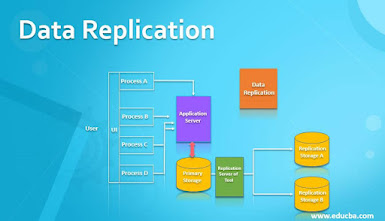Oracle Database Replication: A Comprehensive Guide to Data Synchronization
Oracle database replication plays a crucial role in ensuring data availability, reliability, and disaster recovery for organizations relying on Oracle databases. In this article, we will delve into the intricacies of Oracle database replication and explore the benefits it offers for data synchronization.
Data Redundancy and High Availability:
Oracle database replication allows you to create redundant copies of your data across multiple nodes or servers. This redundancy ensures high availability by enabling continuous data access even in the event of hardware failures or system outages. With replication, you can distribute your data across geographically dispersed locations, providing resilience and minimizing the risk of data loss or downtime.
Improved Performance and Scalability:
Replicating an Oracle database can significantly improve performance and scalability. By distributing data across multiple nodes, you can offload read-intensive operations to replica databases, reducing the load on the primary database and enhancing query response times. Replication also enables horizontal scaling, allowing you to handle increasing workloads by adding more replica databases to distribute the processing load.
Disaster Recovery and Business Continuity:
Oracle database replication serves as a crucial component of a robust disaster recovery strategy. By replicating data to offsite locations, you can ensure that in the event of a disaster or system failure, your data remains intact and accessible. Replication technologies like Oracle Data Guard provide automated failover capabilities, enabling seamless transitions to standby databases and minimizing downtime, thus ensuring business continuity.
Real-Time Data Synchronization:
One of the key benefits of Oracle database replication is real-time data synchronization. Replication mechanisms allow changes made in the primary database to be propagated to replica databases almost instantaneously. This ensures that all replicas have the most up-to-date data, facilitating consistent reporting, analysis, and decision-making across multiple locations or departments.
Geographically Distributed Data Centers:
For organizations with geographically distributed data centers, Oracle database replication is invaluable. It enables data synchronization between different sites, allowing for local access and minimizing network latency. This is particularly beneficial for multinational companies with operations in different regions, as it enables localized data processing, compliance with data sovereignty regulations, and improved user experiences.
Conclusion:
Oracle database replication is a powerful
solution for ensuring data availability, performance, and disaster recovery. By
replicating your Oracle database, you can achieve high availability, improved
performance, and scalability, while also enhancing your disaster recovery
capabilities. Real-time data synchronization and the ability to distribute data
across geographically dispersed locations enable seamless business operations
and decision-making. Embrace Oracle database replication to unlock the full
potential of your data infrastructure and safeguard your organization's
critical information.




Comments
Post a Comment